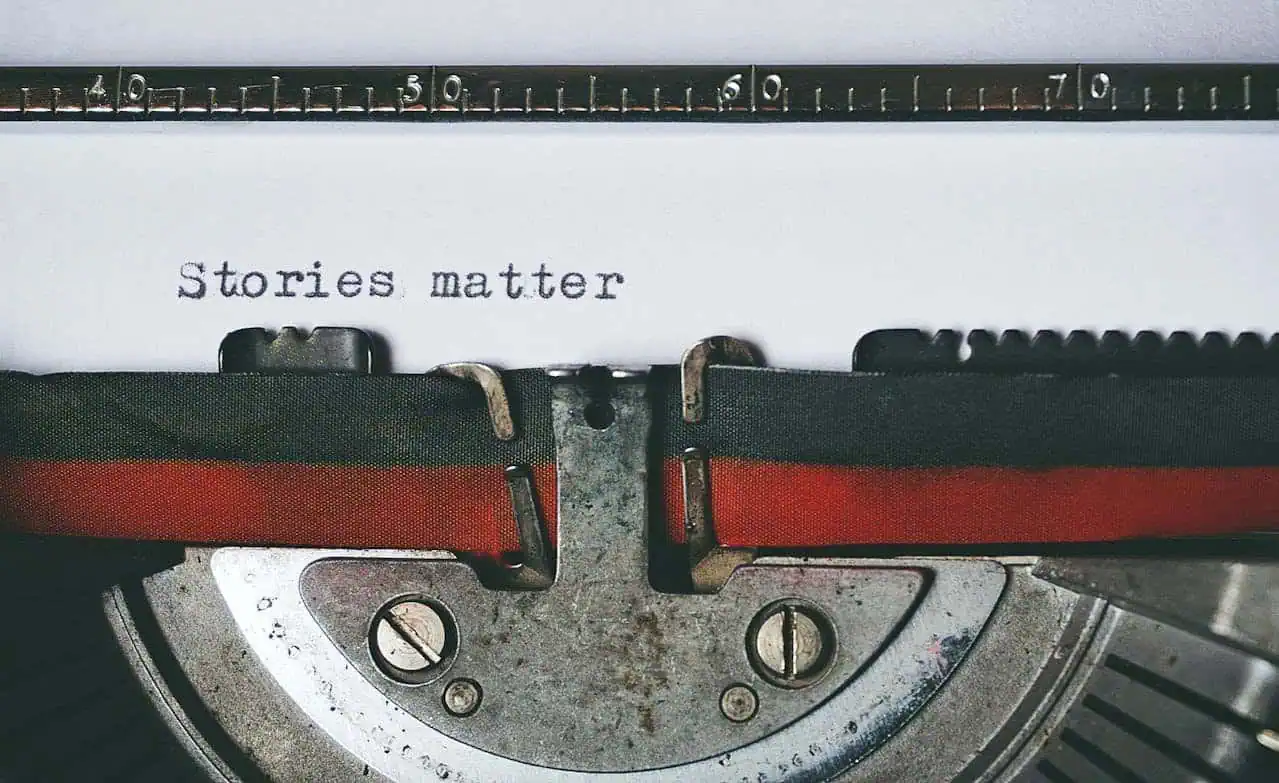Who doesn’t love a good story? My mum taught me to read at a young age, before I even started school, and I’ve been in love with stories ever since.
Sometimes (not always – I was a relatively normal child) I even looked forward to bedtime so I could have a story read to me.
We live our entire lives in a linear narrative in which we are the central character.
Stories come in so many forms: books, movies, short stories, poems, music, TV shows, magazine articles, news reports or just in every day conversations with the people we meet. We are constantly gathering, sharing, listening to and creating stories.
When we meet people for the first time we are already subconsciously creating a story for that person based on our first impressions – the way they speak, their tone, the way they dress and their body language.
The power of word of mouth
If you were to ask any business what their best source of referral is the chances are they will say word of mouth. When we ask someone’s opinion or are offered a recommendation, they give us a snapshot of a story and we then make a decision whether or not to pick up the narrative thread and find out where it leads.
When we communicate our message we are projecting a version of the story that we want others to share.
Your business story
For every business, you need to think carefully about how you can convey a positive, consistent message through your marketing and promotional activities.
Think multisensory
- The most memorable stories are the ones that involve all our senses: sight, sound, touch, taste, smell. Smell especially is a powerful emotional trigger.
- Colours evoke feelings. Have you noticed how many food retailers use green? It makes us think of nature and the environment. Tesco uses red white and blue to remind us they are British. Kids love primary colours.
- When you communicate face to face, only 7% of the message is transmitted in the words you use. 38% is in the tone you use and 55% is body language. Be conscious of the physical signals you give and receive as they form a large part of how the story is delivered and interpreted.
The best stories are the ones we feel part of, that we can relate to as customers, when our opinions, thoughts, feeling and aspiration are listened to and respected. A happy customer is your best marketer.
The story of how Innocent Drinks started is a good example. After working on their smoothies recipes, the three founders sold the drinks from a stall at a festival. They put up a sign asking people if they should give up their jobs to make the smoothies, and people cast their vote by putting their empty bottles into a ‘Yes’ or ‘No’ bin.
Could you find a way to involve your customers in your story?
Make them one of the characters in your narrative by using testimonials, case studies and inviting reviews and comments.
Through the use of social media, business stories can now go global. Social media is just another form of word of mouth to share and involve people in the narrative of your business.
So what stories do you want to hear and share about your business? Because people don’t just buy people, they buy stories.

